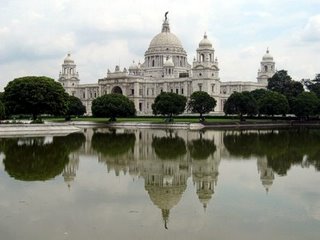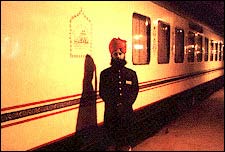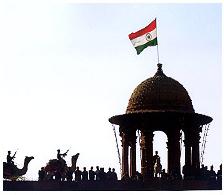Stretch and Chortle: Yoga a Hoot to Behold
A Dose of Laughter in Bangalore's First Light
BANGALORE, India
"Ho ho. Ha ha ha. Ho ho," they guffaw, sides heaving and heads thrown back to the sky. "Ho ho. Ha ha ha. Ho ho."

Basava Raju, 68, retired state bank officer and certified "laughtologist," leads members of the Mini Forest Laughter Club in "lion laughter." "They are addicted," he said. "They don't like to miss even a single day."
A passing jogger doesn't give them a second glance, and why should he? They're the regulars from the Mini Forest Laughter Club, commencing their daily ritual of smiles, giggles, chortles and belly laughs that -- in combination with stretching and breathing exercises -- make up the quintessentially Indian discipline of "laughter yoga."
Named for the park where it meets 365 days a year, even during the drenching summer monsoon season, the Mini Forest Laughter Club is made up of middle-class retirees, homemakers and businessmen, among others. It is one of scores of such clubs in this chaotic, high-tech city where beggars and street urchins coexist with eminent scientists and newly minted zillionaires from the booming software and outsourcing industries.
Invented by a Bombay physician, Madan Kataria, in 1996, laughter yoga is predicated on the idea that "laughter for no reason" can promote spiritual well-being and health benefits, such as lowered blood pressure. The concept has given rise to laughter clubs in India and a number of other countries, including the United States, and inspired a 1999 documentary by celebrated Indian filmmaker Mira Nair (who also directed "Monsoon Wedding").
"Really, they are crazy," Basava Raju, a retired state bank officer who founded the Mini Forest club, said of his fellow laughter enthusiasts.
"They are addicted so much," added Raju, a fit-looking 68-year-old whose business card identifies him as a yoga therapist and "laughtologist." "They don't like to miss even a single day."
The morning session unfolds according to well-established ritual.
After the introductory bout of "executive laughter," the group warms up with more-traditional yogic routines. Led at first by K.R.L. Narayanan, a 59-year-old chemist in khakis and running shoes, they rub their abdomens in a circular motion while repeating "Om," the sacred Hindu mantra, then extend their tongues and pant like dogs.
Then the laughers step up the pace, running toward one another and slapping high-fives, clapping and marching in circles like soldiers in formation. "Go for the mobile jog!" commands Narayanan, urging the group into a gentle trot.
The laughing commences in earnest with a minute or two of "stretch laughter," which consists of laughing while miming the shooting of a bow and arrow toward the sky, followed by a cleansing burst of "blaster laughter."
"Breathe in -- blast with the laughter!" commands Raju, the ex-banker and resident laughtologist, prompting an explosion of loud guffaws.
During the 45-minute session, the group partakes of "ice cream laughter" (a low chuckle that is savored slowly), "coffee laughter" (performed while pretending to pour coffee) and "mobile laughter" (initiated by shouting, "Hello! Hello!" into an imaginary mobile phone). The hilarity is infectious, especially when the members parody a mirthful lion -- opening their mouths wide and wiggling their tongues -- in the exercise known as "lion laughter."
Some laughter exercises are more subtle. "Meditative smile, please," orders Madhav Pai, a 64-year-old retiree in hiking shorts and a Grand Canyon T-shirt. Interspersed with the laughter are various stretches as well as facial exercises to strengthen the eye muscles and tongue.
As the session winds down, it acquires more of a spiritual dimension. After directing the members to hold the left hand up and the right hand down, Raju tells them to "feel yourself like an antenna," with "cosmic energy" entering the body through the left hand and "negative energy" leaving through the right.
" Shanti, shanti ," he says, repeating the Hindi word for peace. "Observe the inner silence you have created."
The meeting ends with "appreciation laughter" -- members laugh while flashing each other the OK sign -- and "garland laughter," in which they garland one another with imaginary flowers.
It is not yet 7 a.m. As the participants prepare to go their separate ways, Nitya Murthy, 64, a homemaker married to a retired technology executive, attests to the healing power of laughter.
"I had a severe heart attack 12 years ago," she says. "I've been hospitalized five times. I've had two angioplasties." But now, thanks to the laughter club, she says, "I feel fit as a fiddle."
- John Lancaster, Washington Post Foreign Service




